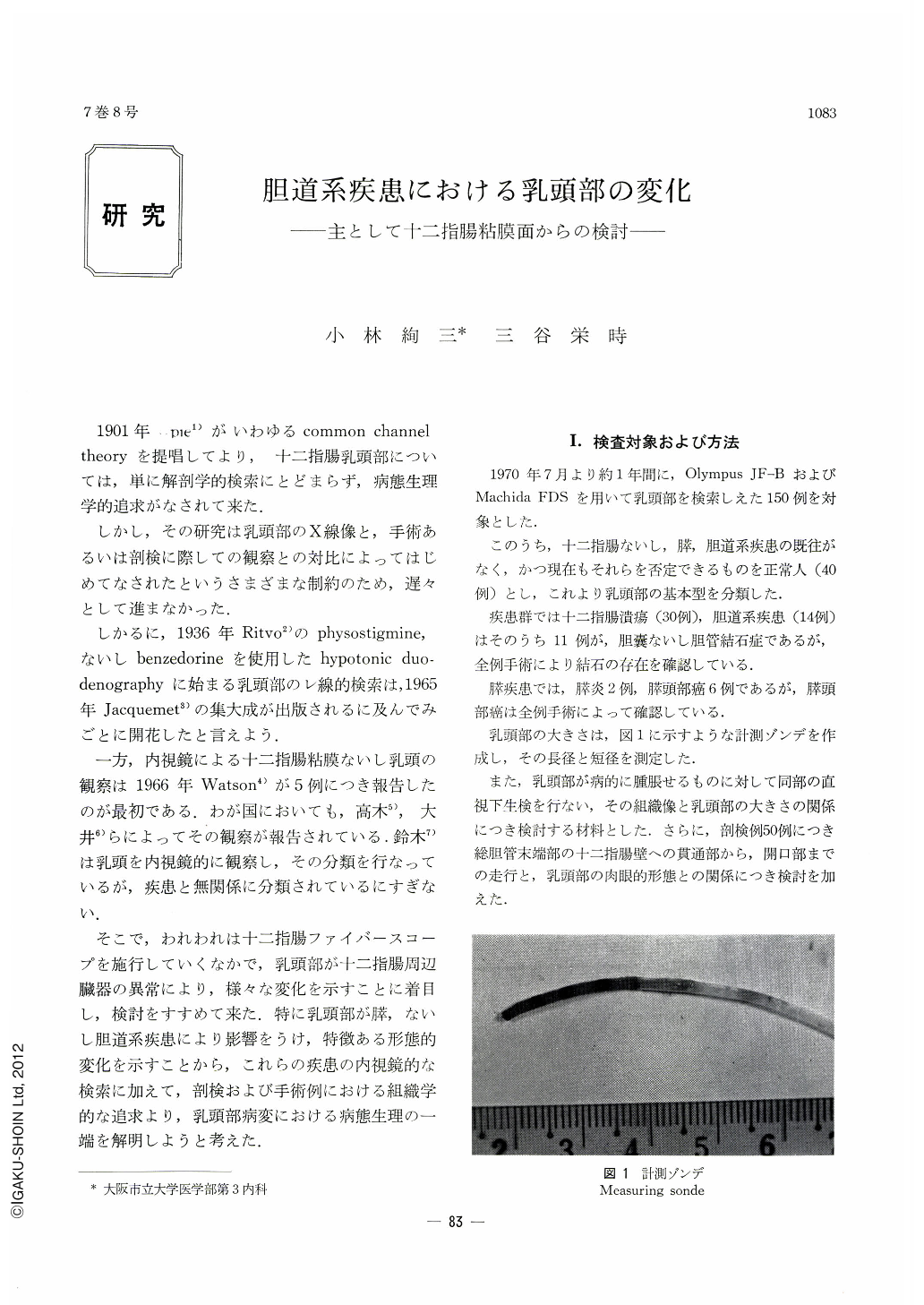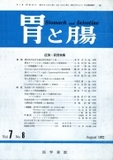Japanese
English
- 有料閲覧
- Abstract 文献概要
- 1ページ目 Look Inside
1901年Opie1)がいわゆるcommon channel theoryを提唱してより,十二指腸乳頭部については,単に解剖学的検索にとどまらず,病態生理学的追求がなされて来た.
しかし,その研究は乳頭部のX線像と,手術あるいは剖検に際しての観察との対比によってはじめてなされたというさまざまな制約のため,遅々として進まなかった.
One hundred and fifty endoscopic observations of the duodenal papilla were made from July 1970 to August 1971 and fifty autopsy specimens including the terminal portions of the biliary tract were examined anatomically.
This paper is to discuss the endoscopic and anatomical findings of the duodenal papilla in various diseases of the biliary tract. The results are as follows:
(1) The proximal longitudinal fold, the covering fold and the anatomical papilla are clinically defined as “the papilla”.
(2) The characteristic appearance of the duodenal papilla is grossly classified into four fundamental groups (A, B, C, D) in the frontal view, and also classified into three groups (Ⅰ, Ⅱ, Ⅲ) in the side view in 40 cases with the normal papilla.
(3) The size of the normal papilla is 7.4±4.9mm in longitudinal diameter and 5.2±3.5 mm in transverse diameter.
(4) In the diseases of the bile duct, especially choledocholithiasis, the size of the papilla became bigger than that of the normal one (18.8±6.6 mm in longitudinal diameter and 12.6±5.6mm in transverse diameter), showing the types D' and Ⅳ.
(5) Dilatation of lumen of the terminal part of the common bile duct was observed in autopsy specimens which showed type D and D'.
(6) Changes in the size and form of the papilla were rather indistinct in diseases of the pancreas in comparison with those of the biliary tract.
(7) A correlation was shown between the maximum diameter of the bile duct and the size of the papilla in diseases of the biliary tract, and the coefficient titer is 0.865. We believe that the above findings result from an inflammatory reaction in the duodenal papilla.

Copyright © 1972, Igaku-Shoin Ltd. All rights reserved.


